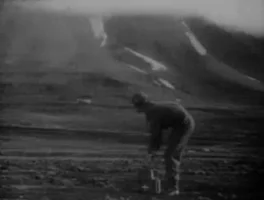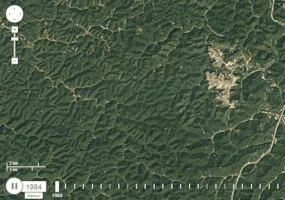The
Corporate War on Coal Miners Continues
By
Phil Mattera for the Dirt Diggers Digest
 The signing ceremony for Donald Trump’s executive order
nullifying the climate initiatives of the Obama Administration was staged so
that about two dozen miners looked on adoringly as the president claimed to be
ending the so-called war on coal.
The signing ceremony for Donald Trump’s executive order
nullifying the climate initiatives of the Obama Administration was staged so
that about two dozen miners looked on adoringly as the president claimed to be
ending the so-called war on coal.
Trump then repeated his promise that the regulatory rollbacks
would “put our miners back to work.”
Just about every analysis concludes this is a hollow promise.
Trump’s action will have little impact on the long-term decline
of coal industry jobs. Even industry figures such as Robert Murray, CEO of
Murray Energy, are warning: “He can’t bring them back.”
And even if there is a modest improvement, it won’t include the
kind of well-paying jobs that used to characterize coal mining.
The executive order’s lifting of the freeze on federal coal
leasing, which is concentrated in Western surface mines, will increase the gap.
EDITOR'S NOTE: Though Phil's account is completely true, it only covers part of the reason why good-paying coal-mining jobs disappeared. From 1990 to 1999, I was staff director for the Citizens Coal Council, a federal of grassroots groups working to stop environmental damage from coal-mining. Both underground and surface mining had moved in dangerous directions to replace workers with technology, cutting underground jobs by using "longwall mining" machines where one or two workers could run a huge machine that could take out a panel of coal the width and length of a football field, leaving no support for the surface above.
At strip mines, larger and larger machines were supplemented by "cast-blasting" - the use of extraordinary amounts of explosives to blast away acres of "over-burden" at a time. Then came "mountain-top removal" where huge machines would simply lop off the top of a mountain to expose the coal and dump the "spoil" into the valleys, destroying steams and lakes.
In addition to using non-union operators, as Phil describes, the use of these technologies meant there were far fewer jobs for anyone, union or non-union. - Will Collette
This did not happen by accident. The coal industry has been seeking for years to weaken the United Mine Workers by shifting work to non-union operations or by spinning off UMW-represented mines as weak stand-alone companies.
At strip mines, larger and larger machines were supplemented by "cast-blasting" - the use of extraordinary amounts of explosives to blast away acres of "over-burden" at a time. Then came "mountain-top removal" where huge machines would simply lop off the top of a mountain to expose the coal and dump the "spoil" into the valleys, destroying steams and lakes.
In addition to using non-union operators, as Phil describes, the use of these technologies meant there were far fewer jobs for anyone, union or non-union. - Will Collette
This did not happen by accident. The coal industry has been seeking for years to weaken the United Mine Workers by shifting work to non-union operations or by spinning off UMW-represented mines as weak stand-alone companies.
The industry’s biggest producer, Peabody Energy, did this in
2007 when it shed Patriot Coal, which subsequently declared bankruptcy and was
given court approval to slash wages, pensions and healthcare benefits of its
workers and retirees.
Today Peabody has only one operation left with a UMW presence.
Anti-union animus was pronounced at various companies — especially Pittston and
Massey Energy — that merged into what is now called Alpha Natural Resources.
One consequence of de-unionization is that coal managers can
more easily cut corners on safety.
This was seen at Peabody more than three decades ago. In 1982
the company pleaded no contest and paid a penalty of $130,000 to settle federal
charges that it falsified dust-sampling reports submitted to the Mine Safety
& Health Administration (MSHA) as part of the monitoring of conditions that
can cause black lung disease.
In 1991, after a year-long investigation by MSHA, Peabody once
again stood accused of tampering with coal-dust test results. It pleaded guilty to criminal charges and
was fined $500,000, the largest penalty that had ever been assessed for a
non-fatal violation of federal mine safety regulations.
In 2006 a dozen miners died in a methane gas explosion at
the Sago Mine in West Virginia operation, which had been cited by MSHA for “combustible
conditions” and “a high degree of negligence.”
During 2005 the mine (then run by International Coal Group,
which later merged into Arch Coal) had received more than 200 violations, nearly
half of which were serious and substantial.
Allegations of poor safety practices at a non-union mine
surrounded an even worse disaster — the death of 29 miners at Massey Energy’s
Upper Big Branch operation in West Virginia in 2010.
The mine had been cited more than 50 times by MSHA in the month
before the explosion and had racked up 1,342 violations over the previous five
years.
In 2011 Alpha Natural Resources, which bought Massey after the
accident, had to pay $209 million to settle federal criminal
charges.
If Trump really wanted to do something to help coal miners, he
would beef up MSHA’s enforcement capacity and embrace labor law reforms that
would help the UMW regain lost ground.
Instead, he is proposing a 21 percent cut in the budget of the
Labor Department, of which MSHA is a part, and staying silent on the
anti-worker practices of the coal companies he is so eager to assist.
